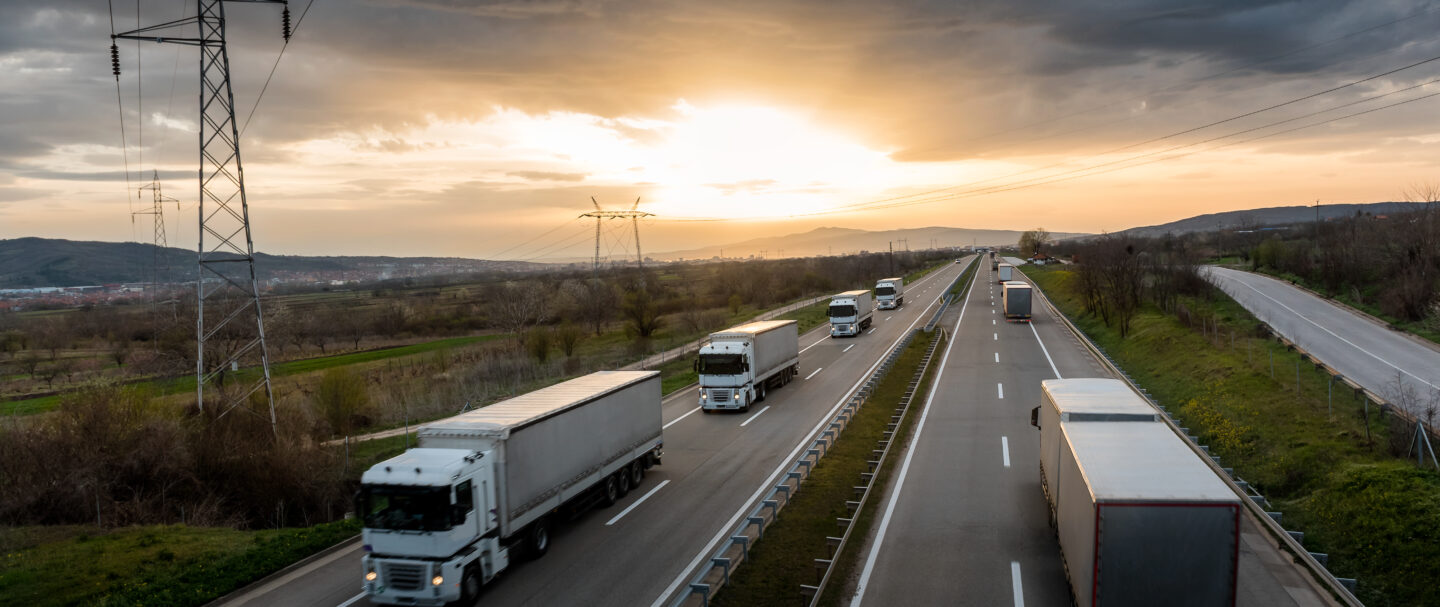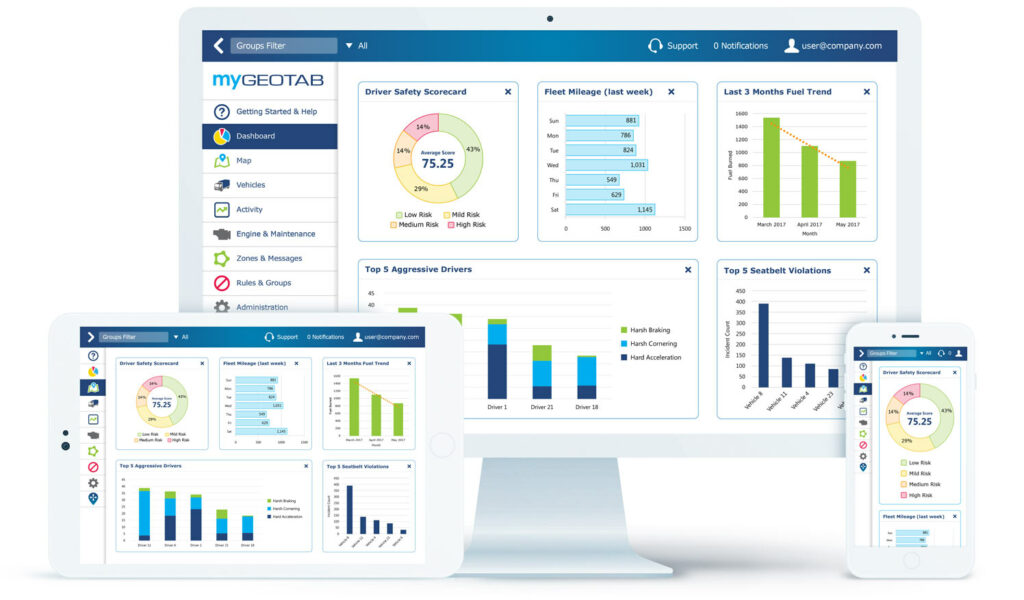
Bringing New-Gen Fleet Management to the APAC: Geotab Interviewed

As part of our ongoing series on the challenges of digitization in the logistics and supply chain industries, we were lucky enough recently to grab some time with two representatives from Geotab, one of the world’s premier fleet management and digital vehicle telematics companies.
We got the lowdown on Asia-Pacific fleets from Deepak Kadambi, General Manager of Southeast Asia for Geotab, plus we were joined by Colin Sutherland, Executive Vice President of Sales & Marketing, who’s based out of Canada.
Already a big player in the US and Europe, the company is on the brink of maximizing its worldwide success by offering its unique blend of telematics and open data to the APAC market.
Firstly, we asked Deepak Kadambi, General Manager of Southeast Asia for Geotab, about the differences between commercial fleet operations in this specific part of the world and Geotab’s more established markets.
Deepak: “There is a difference between fleets in the US versus in Asia, such as fleet size, vehicle mix and vehicle type. Fortunately, Geotab’s services and products are suitable for all fleet sizes and compositions, offering businesses […] the power of telematics, regardless.”
Given those differences, we asked whether Geotab’s offerings were only suitable for the big multinationals. Colin Sutherland was quick to put us right.
Colin: “When you hear the word ‘fleet management,’ it may bring to mind entire yards of trucks or taxicabs [but] many businesses with only a handful of vehicles engage with fleet management every day. […]
Most recently, during Geotab’s first virtual event, Geotab Extend, the company announced the launch of Geotab for Small Business, a new offering designed to support businesses that own and operate only a few vehicles. With this plan, small business owners gain greater data insights to help make more informed decisions. With the same telematics insights and tools used by multinational corporations, small businesses are equipped to help stay competitive within the market.”
We asked Deepak why the company was so enthusiastic about Asia.
Deepak: “There are numerous macroeconomic trends that make Asia of significant importance to most global businesses. […] Key drivers of the economy [are] the middle class, size of the working population, and consumption trends: all a massive tailwind for many organizations.
Asia is also home to seven of the world’s 11 most-congested cities, and countries [and so many] are looking for more sustainable ways to move people, goods, and services. Residents of the region are largely ahead of the curve when it comes to adopting clean-energy transportation solutions, so Geotab has identified an opportunity to offer its expandable telematics to provide the foundation for businesses’ current telematics needs – but also to meet future needs, including support for EV.
The trends themselves, in addition to the conversations with multinationals, helps to validate our strategic expansion in Asia.”
So, what might users of Geotab’s solutions in the region gain by looking deeper and implementing some of the technologies on offer?
Colin: “The most obvious benefit of telematics is the cost reduction from improved safety, fuel efficiency, maintenance and productivity. Geotab’s Fleet Savings Summary Report, helps customers estimate a fleet’s operating costs and discover new savings based on rich telematics data. By identifying saving opportunities, a fleet manager can help reduce the cost of ignoring (COI), improve a fleet’s operating efficiency and grow their bottom line.”
Over the longer term, companies established in Europe have used the tech to grow and expand their businesses, in one example. Clearly, there is a great deal more behind some of the logistics industry’s success stories with regards to the Geotab solutions?
Deepak: “Geotab classifies a variety value proposition sought by our customers in six pillars: Productivity, Fleet Optimization, Safety, Compliance, Expandability, and Sustainability.
Each of Geotab’s pillars is relevant [but in Asia], much of the conversation is around Productivity (trip miles, accurate arrival, and departure times, etc.); Fleet Optimization (vehicle speed, fuel, etc.); and Expandability (hardware Add-Ons like cameras, asset trackers, etc. offered through Geotab Marketplace).

Source: Geotab
On the Geotab Marketplace, [we and our partners] offer in-vehicle cameras and Bluetooth asset tracking and apps for managing maintenance & fuel tracking, all integrated with Geotab’s open telematics platform. Our customers choose from a variety of solutions to help them customize and/or scale their data to help meet the changing needs of their fleet.
The interoperability between multiple systems with Geotab’s help makes the solution one that is (literally) open-ended. Companies with investment in technology platforms already will be pleased to learn that those solutions will continue to provide ROI — with the Geotab offerings working in harmony.”
In fact, Geotab is well-known in technology circles for its integration capabilities with other systems. Is that aspect a big part of the platform’s attractiveness?
Colin told us: “One of Geotab’s key differentiators is its open platform and ability to seamlessly integrate with other systems. With an open platform, customers have unlimited access to the data generated by their vehicles. This is important because it allows customers to have complete control over their data, enabling businesses to share and utilize the data as they see fit with API developer support from Geotab.”
A case in point is the Geotab Marketplace that Deepak mentioned earlier. It brings together different vendors of solutions that plug-and-play with Geotab, providing more choices and possibilities than a single vendor could hope to support.
Colin: “With access to the Geotab Marketplace, a business solution storefront of hardware Add-Ons and software Add-Ins that integrate with Geotab’s open platform, customers can choose from a vast variety of solutions to help them customize and/or scale their data to help meet the ever-changing needs of their fleet. Integration partners offer IT services that use Geotab’s SDK to integrate with other internal business systems and applications, helping customers save time and money and improve the overall efficiency of their organization.
[Our] product partners build various apps and Add-Ins that help integrate with third-party systems like SAP, in addition to mapping Add-Ins, dispatch, workflow automation, scheduling, routing, customer management, and more.”
As technology enthusiasts here at Tech Wire Asia, we were keen to learn about the next generation of IT that the company is looking at right now: a glimpse of what’s to come if you will.

Source: Geotab
Colin: “With [our] newest pillar of innovation being Sustainability, Geotab intends to further support EV adoption and enhance mobility to help improve air quality and help businesses achieve their sustainability goals. Geotab has introduced a variety of tools and resources to further those objectives.*
As Geotab moves into the future, it will continue to encourage and help businesses electrify their fleets to help meet new reduced emission goals. In addition to EV adoption, improved mobility will help the transportation industry achieve its sustainability goals. Our current infrastructure cannot sustain the demands of our modern mobility needs — traffic congestion and our current dependence on fossil fuels make transportation a major contributor to greenhouse gas emissions.”
* Tools and resources include Green Fleet Dashboard, EV Battery Degradation tool, the Electric Vehicle Suitability Assessment tool (EVSA), and the Temperature Tool for EV Range.[ed. use <small> tags around this]
Finally, we asked the General Manager for Southeast Asia what happens next with Geotab in the region:
Deepak: “We are humble enough to know that we don’t have solutions for all problems, and while we might be a large company, we consider ourselves a start-up in the Asian region.
[…] We want to have as many conversations as possible to understand the specific needs of the market. This will allow us to modify and cater our rich offerings to the specific needs of the region, which will then help us to grow to be the respected technology provider for fleets in the region — much like we are in various continents in the world.
Our regional strategy in Asia is Learn, Modify and Build, Expand and Grow.”
To start one of those conversations that can change the way your fleet operates in or around the APAC, reach out to the company and request a demo. Early adopters have a unique opportunity to leverage this market-leading company’s offerings as it expands and grows in the region.
READ MORE
- The criticality of endpoint management in cybersecurity and operations
- Ethical AI: The renewed importance of safeguarding data and customer privacy in Generative AI applications
- How Japan balances AI-driven opportunities with cybersecurity needs
- Deploying SASE: Benchmarking your approach
- Insurance everywhere all at once: the digital transformation of the APAC insurance industry
